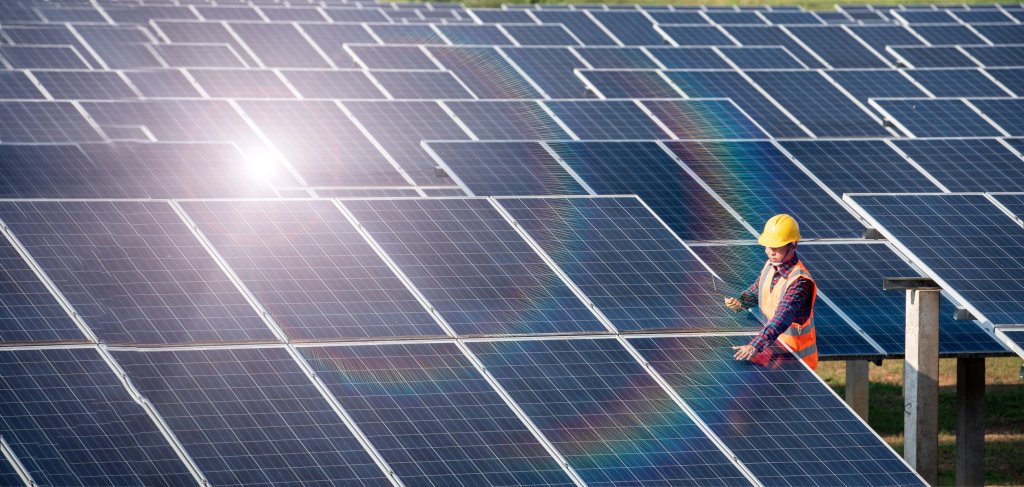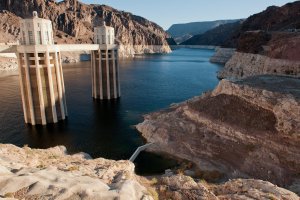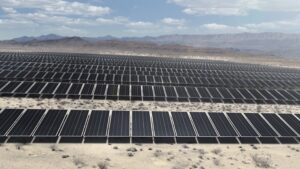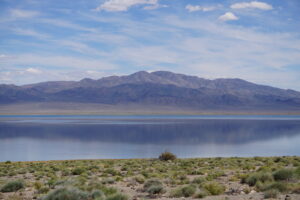6:30
News Story
Feds advance four solar projects in Nevada, and more in surrounding states
More utility-scale solar development is on the horizon for Nevada’s deserts after federal land managers announced the advancement of four proposed solar projects in the state Wednesday.
If approved, the combined projects would generate enough renewable energy and battery storage to power nearly 400,000 homes.
On Wednesday, the Bureau of Land Management released a draft environmental analysis for three of the projects in Nevada, which are now available for public comment.
In Mineral and Lyon counties, the Libra Solar Project would produce 700 megawatts of solar power and include 700 megawatts of battery storage to power more than 212,000 homes. According to the environmental analysis, the project would also include 24 miles of transmission line.
Federal land managers also released an environmental analysis for the proposed Rough Hat Clark County Solar Project, a utility-scale development west of Las Vegas. The Spain-based Candela Renewables project could potentially power more than 121,000 homes by adding 400 megawatts of clean solar photovoltaic power to the grid, and a 700-megawatt battery energy storage system.
That was not the only utility-scale solar project in Clark County pushed forward by federal land managers Wednesday.
BLM released a draft environmental analysis of the Dry Lake East Energy Center Solar Project north of Las Vegas — a 200 megawatts solar facility with 200 megawatts of battery energy storage. The project by Boulevard Associates, a subsidiary of NextEra Energy, would also include a facility for an additional 400 megawatts of battery storage.
On Wednesday, the BLM also announced their intent to move forward with another NextEra Energy development, the Dodge Flat II Solar project, near Wadsworth in Washoe County. The agency said it will soon start an environmental analysis for the project, which would add 200 megawatts to the grid and a battery energy storage system.
Arizona and California are likewise set for solar development in the near future. Combined, projects in both states have the potential to generate enough renewable energy to power more than 113,000 homes in the region, said federal land managers.
More solar in more states
On Wednesday, the Department of the Interior announced an updated roadmap for solar energy development across the West, opening 22 million acres of federal lands to solar development.
The proposal, known as the Western Solar Plan, updates a decade-old plan identifying areas with high solar potential and low resource conflicts in Arizona, California, Colorado, Nevada, and New Mexico in order to guide solar development and provide certainty to developers.
The new updated roadmap refines the analysis in the original six states and expands it to include Idaho, Montana, Oregon, Washington and Wyoming.
By directing development to areas that have fewer sensitive resources, less conflict with other uses of public lands, and close proximity to transmission lines, the BLM believes they can permit clean energy projects more efficiently while maintaining public approval. Under the plan, the Biden administration hopes to achieve their goal of a 100 percent clean electricity grid by 2035.
“By updating this plan, we will facilitate faster and easier responsible permitting in priority areas, and improved consistency and processing rights of way for utility scale solar projects. Simply put, the updated Western solar plan will create the foundation for solar development and conservation on public lands for the future,” said Department of the Interior Acting Deputy Secretary Laura Daniel-Davis, during a press call.
The proposal follows other regulatory updates, including pending renewable energy rules that would accelerate solar energy development on federal land in the West by sharply reducing fees, a move that could further incentivize renewable energy development on Nevada’s vast public lands.
Despite faster permitting and development promised under the new roadmap, Daniel-Davis assured “every proposed project will still undergo thorough and project specific environmental reviews with opportunities for public stakeholder input at every stage prior to project approval.”
In the first three years of President Joe Biden’s term, the BLM has approved 47 clean energy projects in the West, including 16 solar and 11 geothermal plants which combined are expected to produce over 11 gigawatts of electricity, enough to power 3.4 million homes. BLM has also approved 20 transmission lines for connecting new clean energy production to the grid.
The BLM is processing another 67 proposed utility-scale onshore clean energy projects on public lands in the western United States, including solar, wind, and geothermal projects. Those projects have the potential to add more than 37 gigawatts of renewable energy to the western electric grid once complete.
“All of the energy projects that we are announcing today will deliver enough clean energy to power more than half a million homes. As you can see from the number of projects we’re analyzing, our work will be greatly aided by the new Western Solar Plan,” said BLM Director Tracy Stone-Manning, during a press call.
The Western Solar Plan includes six alternatives, each proposing to make different amounts of public land available to solar development applications under different criteria such as proximity to transmission infrastructure, designated critical habitat, or other important ecological and cultural resources.
Conservation groups in Nevada said they hope to take advantage of the flexibility in the plan to push for responsible renewable energy development while protecting vulnerable ecosystems.
“We’ll be pushing for a final plan that allows solar energy on public lands that can support it while protecting ecologically sensitive areas that plants and animals depend on for survival,” said Patrick Donnelly, Great Basin director at the Center for Biological Diversity. “The Biden administration has presented us with significant choices about the future of our public lands: Will we allow solar energy production basically everywhere or confine it to previously disturbed areas and other places it’ll do the least environmental harm? The latter is clearly the best course.”
Stone-Manning, the director for BLM, said the agency is “extremely mindful of the importance of balance.”
“As timely and as important as our clean energy goals are, we also have a deep responsibility to manage healthy landscapes. wildlife habitat, and the cultural and historic resources on our nation’s public lands. To achieve that balance, we will continue to work closely with diverse partners, tribes, states, and other stakeholders, and the public in our effort,” she continued.
Public input will inform a Final Programmatic Environmental Impact Statement and Record of Decision. The public can submit written comments through April 18, 2024. More details are available on BLM’s Solar Program website.
Our stories may be republished online or in print under Creative Commons license CC BY-NC-ND 4.0. We ask that you edit only for style or to shorten, provide proper attribution and link to our website. AP and Getty images may not be republished. Please see our republishing guidelines for use of any other photos and graphics.




